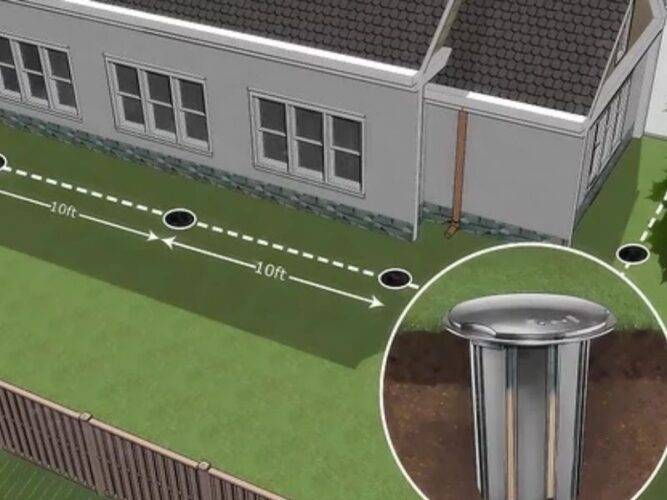Termites are a common threat to homes, causing extensive damage if not addressed promptly. To safeguard your property, it’s crucial to take preventive measures during the construction phase.
By incorporating termite-resistant strategies and implementing effective precautions, you can protect your investment and ensure long-term structural integrity. This article provides essential tips on how to shield your home from termites during the construction process.
Start with a Termite-Resistant Design
Creating a termite-resistant design is the foundation for protecting your home. Consider the following elements:
a) Proper ventilation: Ensure adequate airflow and moisture control by incorporating vents and fans in damp areas.
b) Elevated foundation: Raising the structure off the ground using piers or concrete footings can help deter termites.
c) Physical barriers: Install metal termite shields or termite-resistant building materials, such as treated lumber or concrete, to create a barrier against termite intrusion.
d) Avoid wood-to-ground contact: Minimize wood-to-ground contact by using concrete slabs, metal or plastic barriers, or pressure-treated wood.
Use Termite-Resistant Materials
Choosing termite-resistant materials during construction can significantly reduce the risk of termite infestation. Consider the following options:
a) Treated lumber: Opt for pressure-treated lumber, which is infused with chemicals that repel termites.
b) Concrete and steel: Utilize concrete or steel components in critical areas to minimize the use of wood.
c) Termite-resistant insulation: Select insulation materials, such as cellulose or fiberglass, that are less attractive to termites.
d) Synthetic stucco or fiber cement siding: These siding options provide excellent termite resistance compared to traditional wood siding.
Implement Pre-Construction Soil Treatment
Pre-construction soil treatment is a proactive step to safeguard your home from termites. The following methods can be employed:
a) Chemical barrier: Apply a liquid termiticide to the soil before construction, creating a chemical barrier that repels and kills termites.
b) Baiting systems: Install termite baiting stations around the construction site to monitor termite activity and prevent their access to the structure.
Regular Inspections and Maintenance
After construction, it is crucial to maintain vigilance against termite infestation. Follow these steps:
a) Regular inspections: Schedule professional termite inspections annually or as recommended by experts to detect signs of termite activity early.
b) Prompt repairs: Address any moisture issues, leaks, or wood damage promptly to prevent attracting termites.
c) Termite treatments: Consider periodic termite treatments using liquid termiticides or baiting systems to provide ongoing protection.
Educate and Involve Contractors
Ensure your contractors are knowledgeable about termite prevention. Educate them about the importance of termite-resistant construction and encourage their active involvement in implementing preventive measures.
Conclusion
Protecting your home from termites during construction is a wise investment in the long-term structural integrity of your property.
By employing termite-resistant design, using appropriate materials, implementing pre-construction soil treatment, and conducting regular inspections, you can effectively minimize the risk of termite infestation and enjoy a termite-free home for years to come.

